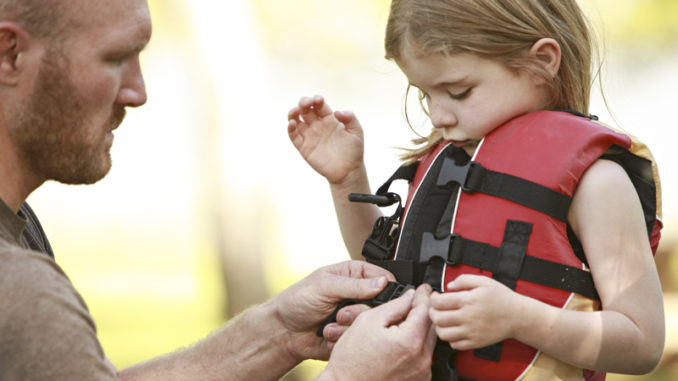
PFDs only work if you’re wearing them
This time of year, sportsmen are hitting Louisiana’s waterways, carrying on the traditions of their forebears, and celebrating a way of life that is unique and something to be proud of.
The water binds people from disparate backgrounds together. And who says blood is thicker than water? Louisiana’s creeks, rivers and bayous branch out across the land like a circulatory system, and is Louisiana not the beating heart of the Gulf?
Caught up in the excitement of fishing tournaments, offshore trips and the myriad other enticements of the Sportsman’s Paradise, it’s easy to miss news of the deaths that occur out there, too — deaths that are as routine, as they are tragic. Maybe we choose to overlook such news.
More tragic than the loss of life, is the sure knowledge that most of these deaths could have been prevented if better choices had been made by someone involved. The choice to remain sober, or to designate a sober boater; the choice to practice the buddy system when you are on the water, or to set check-in times with someone who knows your plans; and the choice to wear a life jacket are three that come to mind immediately.
Maybe you don’t drink or smoke/vape, or maybe you would never think to go boating or wade fishing alone. Many of you out there fall into these two categories.
But every one of us who ventures onto Louisiana’s waterways has the choice to wear a life jacket or personal floatation device (PFD).
Majority of drowning victims were not wearing PFDs
According to BoatUS Foundation for Boating Safety and Clean Water, more than two-thirds of all boating fatalities are drowning incidents, and 90% of drowning victims were not wearing a life jacket.
A variety of floatation devices are on the market, each with a unique set of pros and cons. The appropriateness of a flotation device for a given activity is a matter of the device’s maximum buoyancy, performance level and limitations. You should choose your life jacket based on your boating activities and conditions. One size does not fit all when it comes to PFDs.
Life jackets must be U.S. Coast Guard-approved to meet carriage requirements.
Requirements for Life Jackets
Louisiana law requires that all children age 16 and younger wear a U.S. Coast Guard-approved Type I, II, or III PFD while underway on a vessel less than 26 feet long. The PFD must be fastened and properly sized for the child. Inflatables are not allowed for children age 16 and under. A wearable U.S. Coast Guard-approved Type I, II, or III PFD must be readily available for each of the other passengers on board.
Everyone on board a motorboat less than 16 feet propelled by a hand tiller outboard motor must wear a U.S. Coast Guard-approved Type I, II, III or V PFD while the motorboat is underway.
You must have a U.S. Coast Guard-approved Type I, II, or III PFD for each person on board a pirogue, canoe, or kayak. The PFD must be properly sized and in serviceable condition.
If you’re riding on a personal watercraft, you must wear a U.S. Coast Guard–approved Type I, II, III, or V PFD.
Individuals engaged in watersports, including but not limited to waterskiing, being towed on a tube, wakeboarding, wake surfing, etc., must wear a U.S. Coast Guard-approved Type I, II, III, or V PFD. An inflatable PFD is not permitted.
Remember, safety is your responsibility. Compliance with federal and state law is also your responsibility. This article is meant to be a reminder to check your safety equipment, and is not meant to be legal advice.
For information about Louisiana’s PFD requirements, visit: Required Boating Equipment | Louisiana Department of Wildlife and Fisheries.
For general information about PFDs and the importance of wearing them, visit: Life Jackets : BoatUS Foundation.


